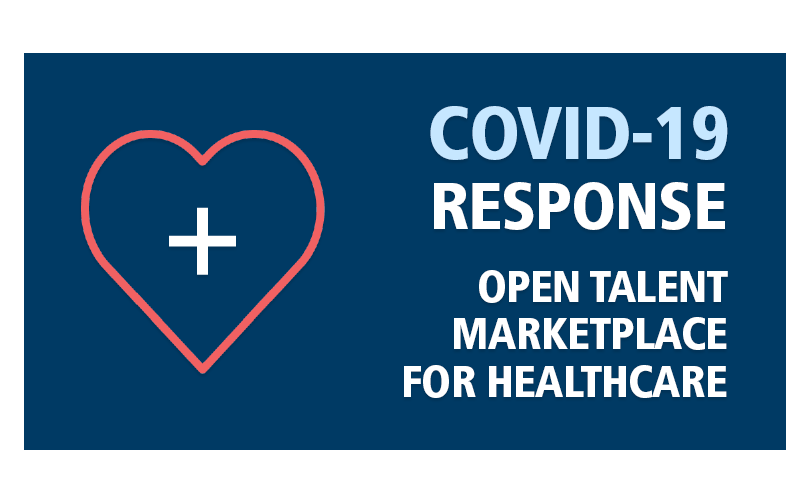
COVID-19: How a Test for the Nation Tested AMN Healthcare’s Core Capabilities
A recent study suggests that the probability of novel disease outbreaks such as SARS-CoV-2 will likely grow by three-fold in coming decades1. This begs the question; how do we prepare? Given what the world has experienced with COVID-19 in the past 2.5 years, and with the 2022 monkeypox outbreak growing rapidly in the U.S., an examination of lessons learned is important if we are to establish systems, protocols, and resources to help navigate unforeseen threats.
This is especially important in the healthcare staffing world where unprecedented demand for clinicians and supplies were stretched to their limits during the pandemic.
Preparation Must be the New Norm
The following challenges and lessons learned demonstrate that it is possible to rethink how we approach country-wide public health events.
1. Access to Healthcare is Paramount
As first-responders in any healthcare event, healthcare facilities experienced staffing demand that stretched their ability to provide care for unforeseen quantities of patients. In fact, Becker’s Hospital Review reported earlier this year that 19% of hospital systems are still critically understaffed2.
LESSON LEARNED: Contingency plans for staffing workers is a must for any healthcare system. Many facilities already plan for additional personnel in periods of high need (think winter flu season and summer births), but these kinds of go-to plans must be extended to the ability to staff for any kind of healthcare event, no matter the level of urgency.
2. Burnout is Creating New Challenges
According to HHS, up to 54% of nurses and physicians, and up to 60% of medical students and residents are suffering from burnout. And, as a result of the pandemic, more than 50% of public health workers are reporting feelings of anxiety, depression, and even increased levels of PTSD3.
When you add in ongoing reports of healthcare workers being assaulted on the job by angry patients, there’s an increased need to provide new support to these critical first responders.
To learn more about the way nurses are feeling and their viewpoints on critical issues facing the profession, read 2021 AMN Healthcare Survey of Registered Nurses: Nursing and the Nation: Extreme Challenges, Extraordinary Impact
LESSON LEARNED: Providing a nurturing environment for staff must be the new norm. Whether it’s a quiet room where staff can escape for a well-deserved break, special mental health resources they can access (EAPs), a daily/weekly check-in to help assess their feelings, a welcoming environment for contingency personnel, support groups where staff can express themselves, in-person lunches from senior personnel, increased security personnel, organized exercise programs, or simply giving them a greeting in the hallway, mental health is mental wealth, and a culture of wellness is a must, especially during times of crisis.
3. Using Big Data/AI to Predict Needs
With new variants of COVID-19 and increased pockets of patients coming into facilities, it was almost impossible to plan for staffing and supply needs during COVID-19. While predictive modeling programs existed pre-pandemic, many healthcare providers relied on the status quo to create scheduling and maintain the most critical elements of their services. That all changed with COVID-19.
LESSON LEARNED: Investing in predictive modeling solutions is now more the norm than an afterthought. These programs use artificial intelligence (AI) and a variety of parameters to create models for staffing and other necessities.
When an executive or senior staffing personnel can look at custom dashboards built for their facility to glean how many RNs, Physicians, or ancillary personnel they’ll need based on previous needs, upcoming needs, and other datasets, they not only create a less stressful work environment, they also strengthen budgetary needs and learn how to better allot funds.
As of this writing, and per the CDC, more than 5,000,000 people in the U.S. have been hospitalized with COVID-19 since August 1, 2020, so having the ability to predict patient care levels must be the new norm.
To learn more about the ways in which predictive analytics and modeling can improve sourcing for any contingency, read Developing a Strategic, Data-Driven Approach to Contingent Labor.

4. A Stand-at-the-Ready Approach is Necessary for Success
When COVID-19 vaccinations became available, we were ready to help vaccinate the nation, pulling from all our internal resources to create a plan of action that would get critical “jabs in arms.”.
Because we are a leader in offering solutions well beyond healthcare staffing, our task of helping FEMA vaccinate the Eastern Coast of the country (27 states and 3 territories) required persistent communications, scheduling efforts, and the ability to be flexible, committed, and organized.
While our ability to pull from the largest database of vetted clinicians was important, other elements of our service capabilities were essential elements in creating, managing, and staffing over 70 vaccination hubs.
With EXCEPTIONAL ratings from FEMA in six key areas, we are happy to say we got it right. To learn more about how we used proprietary software and critical internal departments to help FEMA achieve its mission, download our case study, Implementing a Nationwide COVID-19 Vaccination Plan from the Ground Up, by completing the short form here.
Sources
1Statistics Say Large Pandemics Are More Likely Than We Thought, Duke Global Health Institute
2Becker’s Hospital Review, 19% of US hospitals critically understaffed, 21% anticipate shortages: Numbers by state, https://www.beckershospitalreview.com/workforce/19-of-us-hospitals-critically-understaffed-21-anticipate-shortages-numbers-by-state.html
3Addressing Health Worker Burnout: The U.S. Surgeon General’s Advisory on Building a Thriving Health Workforce, https://www.hhs.gov/sites/default/files/health-worker-wellbeing-advisory.pdf



